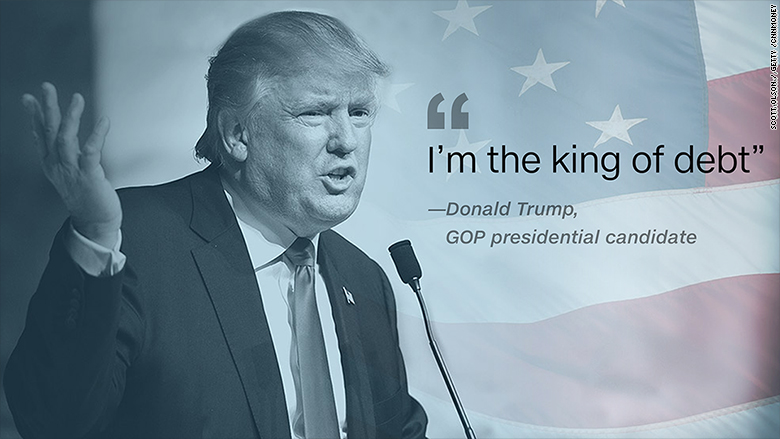There has been great controversy subject to U.S Debts. Given the four consecutive years of $1 trillion budget deficits (2009-2012) has pushed National Debts to over 100% of GDP.
What exactly is National Debt?
The federal government generates a budget deficit whenever it spends more than it earns through its revenue generating activities such as collection of taxes, etc. For this, it issues Treasury bills, notes and bonds to compensate for the difference: financing its deficit by borrowing from public.
The public supports debt as long as the proceeds are used for economic growth and long-term prosperity of country. It loses support when it is raised simply to fund public consumption such as proceeds for Medicare, social security, etc.
What has made National Debt worse?
– The Iraq, Libya and Afghan Wars:
Around $1.3 trillion has been spent on engagements during by the war. It cost the US dearly due to huge involvement of these engagements in defence budget despite the countries being geographically far-off and did not directly pose a threat to US security. It was a huge burden on national debt and some of these still continue.
– Healthcare Entitlements:
The cost and expenditures towards healthcare programs have exceeded the budgeted figures. The general price rise had hidden the culprit, surpassing inflation by a wide margin.
– Continued tax cuts introduced during the George W. Bush era:
The continuing legacy of Bush’s policies and tax cuts are holding up government’s income.
– Social security system:
Limited incoming and more outgoing cash flows have made social security a big component of national debt. The payments are collected from present day workers and are used for immediate beneficiaries. The number of retirees, their long life spans, size of payments etc. has increased.
– Economic stimulus and expenses:
The US economy has not been healthy over the last 15 years. With tightening of growth rates to a more narrow range, higher frequency of recessions even before 2007 and the repeated expenses to get the economy back to normal there was further rise in debts. Similarly bailouts also led to further expenses. It gave a survival push to the economy but it’s benefits are yet to be realized thereby stating it to e ‘pure expenditure’.
With the above outlays, the income sources have been hit.
Individual taxpayers contributed half of annual tax receipts and the Bush tax cut policies and stagnant US salaries are few reasons. Further corporate taxes, excise taxes, too show a declining trend. In this way in the last decade the national debt spiked to $19.3 trillion or about $59,794 per person, as of fiscal year 2016.
How does it affect average individuals?
- 1. As government would default on its debt be service obligation, the Treasury department would increase yield on newly issued securities so as to attract new investors. Now the government has to pay more interest and this shift in expenditure would cause people to experience lower standard of living as borrowing for long term projects would be difficult.
- As country defaults on its debt service obligation it loses it’s social, economic and political power thereby making national debt a security issue.
- The crowding out effect: As Treasury department increase yield on its securities and they are considered a risk-free rate of return, other investments such as corporate equities and debt which carries risk would lose appeal and reduce generation of pre-tax income for corporations.
- As Treasury department increases the yield on its securities, America would be viewed as riskier.
Looking at the greater yields and to meet the debt service obligation, the corporations will raise the price of their products thereby leading to inflation.In terms of debt-to-revenue, a measure that compares the national debt to the amount of taxes taken in by the federal government, the U.S. has the 2nd highest debt out of 34 OECD countries: On a “per person” basis, each person in the U.S. owes $61,300 – the second highest in the world. Per taxpayer, however, that amount balloons to $167,000.
Hence in above manner national debt has direct impact on people.
How does it affect value of dollar?
The growing U.S. debt weighs on the back of the minds of foreign investors. That’s why, long-term, they may continue to gradually move out of dollar-denominated investments. It will happen slowly, so they don’t diminish the value of their existing holdings.
The following three pressures still exist, and should eventually push the dollar’s value down again in the long term. The U.S. debt is more than $19 trillion. Foreign holders of this debt are always uneasy that the Federal Reserve will allow the dollar’s value to decline so U.S. debt repayments will be worth less in their own currency. The Fed’s quantitative easing program monetized the debt, artificially strengthening the dollar to keep interest rates low. Now that the program has ended, investors are concerned the dollar could weaken. The large debt puts pressure on the President and Congress to either raise taxes or cut spending. This dampens economic growth, sending investors to chase higher returns in other countries. Foreign investors prefer to diversify their portfolios with non-dollar denominated assets.
China’s role in U.S debt crisis:
Owning U.S. Treasury notes helps China’s economy grow by keeping its currency weaker than the dollar. That keeps Chinese exports cheaper than U.S. products. China’s highest priority is to create enough jobs for its 1.4 billion people.The United States allowed China to become one of its biggest bankers because the American people enjoyed low consumer prices. Selling debt to China allows the U.S. economy to grow by funding federal government programs. It also keeps U.S. interest rates low. But China’s ownership of U.S. debt is shifting the economic balance of power in its favour. Part of its economic strategy is to keep its export prices competitive. It does this by holding the Yuan at a fixed rate compared to a basket of currencies, the majority of which is the dollar. When the dollar falls in value, the Chinese government uses extra currency to buy Treasuries, which increases demand for the dollar, increasing its value.
Also, China promises to redeem dollars for Yuan at the fixed rate. It must keep a good supply of Treasury notes in reserve. China’s position as America’s largest banker gives it some political leverage. Now and then, China threatens to sell part of its debt holdings. It knows that, if it did so, U.S. interest rates would rise, which would slow U.S economic growth. China often calls for a new global currency to replace the dollar, which is used in most international transactions. China does this whenever the U.S. allows the value of the dollar to drop, which makes the debt China holds less valuable.
Trump’s plan for national debt:
At the start of his campaign, he made it clear that debt would be a top issue for his administration. In February 2016, Trump said that the U.S. was becoming a “large-scale version of Greece” and that tackling the debt would be “easy” with a more dynamic economy. In April 2016, he said he could pay off the debt after eight years in office.If we add up all of Trump’s preliminary policy proposals – increasing defence, spending to create a new childcare program – subtract amount of money he plans to raise with his tax plans, the result is a contribution of $5.3 trillion to the national debt and $15.45 trillion in 10 years.
Trump has specifically taken reform of Social Security, Medicare, and Medicaid off the table. Since those entitlement programs account for half of all federal spending, there is no serious debt-reduction plan that exempts them. In fact, given that those programs face more than $70 trillion in unfunded liabilities, Trump’s plans would virtually guarantee that the U.S would continue down the same disastrous road to fiscal collapse that it has been taking for the past 15 years. According to him U.S can never default as it can simply ‘print money’. Hence how Trump will choose to deal with the debt is a big question.
By Ayush Jain and Nidhi Rajgor
Image Source: money.cnn.com
One of the articles from The Economic Transcript (February, 2017, issue).


